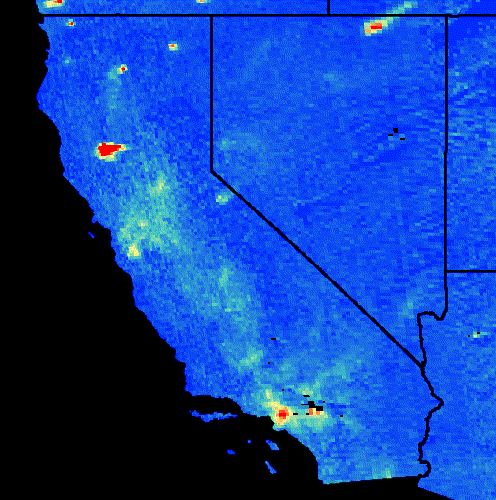Whenever I go for a bike ride, I use Google Maps to find bike lanes and avoid busy streets. When I take my kids to the park, I check the weather forecast so I know what to expect. Imagine if we could also see maps of air quality in our neighborhoods, and route ourselves around the pollution for cleaner, healthier bike rides or park visits. What if every city in the world had “hyperlocal” air pollution information so that urban planners could pinpoint hotspots on maps and work to fix air quality problems?
This goal is a good one to reflect on today for World Environment Day. This year’s theme raises awareness for air pollution, encouraging people everywhere to take action to #BeatAirPollution. Doing so will require a lot of effort from businesses, utilities, governments, scientists and everyday citizens.
Project Air View is our commitment toward this goal: It’s Google’s effort to help map air pollution in every city in the world and give people and organizations accurate and reliable high-resolution maps of air quality. After our partners at the Environmental Defense Fund (EDF) first proposed the idea in 2012, we equipped Google Street View cars with air pollution sensors—starting with measuring greenhouse gas methane (with EDF), and expanding to measure particulate matter, ozone, nitrogen dioxide and more (with Aclima and EDF).
Street View cars equipped with Aclima air quality sensors
Today scientists are starting to merge street-level air quality data with contextual data like satellite imagery, weather data, and government monitoring station data. New satellite sensors, like TROPOMI on the European Space Agency’s Sentinel 5p, are delivering daily pictures of air pollution for the entire globe. You can find this air quality satellite data in Google Earth Engine, along with weather data, atmospheric data and a lot of other Earth observation data (30 petabytes worth!).

Animation showing nitrogen dioxide (NO2) in California and Nevada
for the time period August 27 to September 6, 2018.
Fusing this satellite data with ground-level air quality is made easier by putting environmental data in the cloud. Air quality data collected with Street View cars is served up to researchers via Google Cloud BigQuery, where they can query the tens of millions of records in a matter of seconds. You can also find government monitoring station data published by EPA and OpenAQ in BigQuery through the Google Cloud Public Datasets program.

How Project Air View can help us understand more about ground-level air quality
Air quality is an important issue and can be difficult to map on hyperlocal level, which is why we’ve taken time to make sure we get it right. We’ve made a lot of progress. After launching air quality maps for Oakland, CA with Aclima and EDF, we expanded to other regions of the state. More recently, we have worked with our research partners to add other U.S. cities like Houston and Salt Lake City, as well as Copenhagen, London, and Amsterdam in Europe.
And today, we’re publishing a new batch of air quality data—the measurements we’ve made with Aclima between 2017 and 2018. Scientists can request access to the data via this form. This new mapping data supplements our previously released hyperlocal air quality data, which includes measurements in the San Francisco Bay Area and the northern San Joaquin Valley. The combined datasets now contain 140,000 miles and 7,000 hours of driving from 2016 through 2018. The data captures over three years of air quality moments and insights, big and small.
What’s next?
By the end of this year, we’ll equip 50 more Street View cars with the mobile-friendly Aclima Mobile Sensor Node, and hit the road in cities in Europe, Asia, Africa and North and South America.We’ll continue using tools like BigQuery and platforms like the Air Quality Data Commons to share this data with researchers whose work helps policymakers, businesses, and utilities make better decisions around air quality in their cities.
In the future, we hope existing fleets of vehicles can be used in cities around the world for air quality measurement. We’re already seeing this happen. EDF and Houston’s Public Health Department worked together to equip a few vehicles in their city fleet with air sensors. EDF and the connected vehicle company, GeoTab, published a report showing how cities can determine if they can do the same. And recently, Aclima and Google Cloud have partnered to make this a reality in partnership with cities and counties across the U.S. and around the world, starting with the County of San Mateo and more than 100 municipalities with over 10 million people in California through next year.
Research like this can spread awareness about air pollution, drive new science, and help people take action. If cities around the world join in the effort to measure air pollution, it will be one giant step toward achieving the lofty goal to #BeatAirPollution.
Source : Working to map the air everywhere and help #BeatAirPollution















